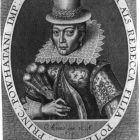ZOOM Fabergé Eggs - Alexander Palace Egg
1908 Easter gift to Alexandra, workmaster Henrik Wigström
Alexander Palace Egg (1908)
Materials
Egg: gold, portrait diamonds, rose-cut diamonds, rubies, nephrite, watercolor on ivory
Miniature palace: tinted gold, silver, varicolored gold, rock crystal, light green enamel, wood, glass
Dimensions
Height of egg: 110 mm. (4 5/16 in.) Diameter of egg: 68 mm. (2 11/16 in.) Miniature palace: 30 mm. (1 3/16 in.) x 65 mm. (2 9/16 in.)
Owner: Armoury Museum of the Kremlin, Moscow
The nephrite egg is adorned with five miniature portraits of the children of Tsar Nicholas II and Alexandra Fedorovna, and contains a replica of the Alexander Palace at Tsarskoe Selo. The upper and lower sections of the egg are set with triangular diamonds bearing the initials AF (Alexandra Fedorovna) and the date 1908. An inlaid wreath of golden leaves surrounds each diamond, and flowers composed of rubies and diamonds. The remainder of the egg’s surface is divided by five vertical lines, studded with diamonds and connected with one another by gold garlands inlaid with rose-cut diamond and ruby flowers.
The oval portraits of the children are executed in watercolor on ivory and framed in diamonds. Above each portrait is a crowned diamond monogram and the first initial of the child represented. Two gold branches tied into a bow rest beneath each child’s portrait. Inside the egg, on the reverse side of each portrait, is engraved the birth date (based on the Old Style calendar) of the person represented, framed by two branches tied into a bow:
Olga—November 3, 1895
Tatiana—May 29, 1897
Maria—June 4, 1899
Anastasia—June 5, 1901
Alexei—July 30, 1904
Pierre Gillard spent more than a decade at the Imperial court teaching the Imperial children French. His memoir, Thirteen Years at the Russian Court (London, 1921) includes his impressions of the Tsar’s four daughters.
The replica of the Alexander Palace and its adjoining gardens is concealed within the egg. Executed in tinted gold and silver, with rock crystal windows and a light green enamel roof, the model is mounted on a gold table with five high, narrow legs.
The Alexander Palace, even though quite modest, was the Imperial family’s preferred residence at Tsarkoe Selo. The palace had been built by the Italian architect, Giacomo Quarenghi in the late 18th century for Catherine the Great’s favorite grandson, Grand Duke Alexander Pavlovich, who would become Tsar Alexander I.
The egg was presented to Alexandra Fedorovna at Easter in 1908 as a gift from Nicholas II at a cost of 12,300 rubles and housed in Alexandra Fedorovna’s Mauve Sitting Room in the Alexander Palace from 1913-1916. The stand is modern, having been made in 1989 at the Moscow experimental jewelry factory.





 Imperial Bedroom
Imperial Bedroom Portrait Hall
Portrait Hall Mauve Room
Mauve Room Maple Room
Maple Room Aleksey's Bedroom
Aleksey's Bedroom Nicholas's Study
Nicholas's Study Aleksey's Playroom
Aleksey's Playroom Formal Reception
Formal Reception Balcony View
Balcony View Aleksey- Balcony
Aleksey- Balcony Children-Mauve
Children-Mauve Nicholas's Bathroom
Nicholas's Bathroom Alexandra- Mauve
Alexandra- Mauve Nicholas's Reception
Nicholas's Reception Tsarskoe Selo Map
Tsarskoe Selo Map